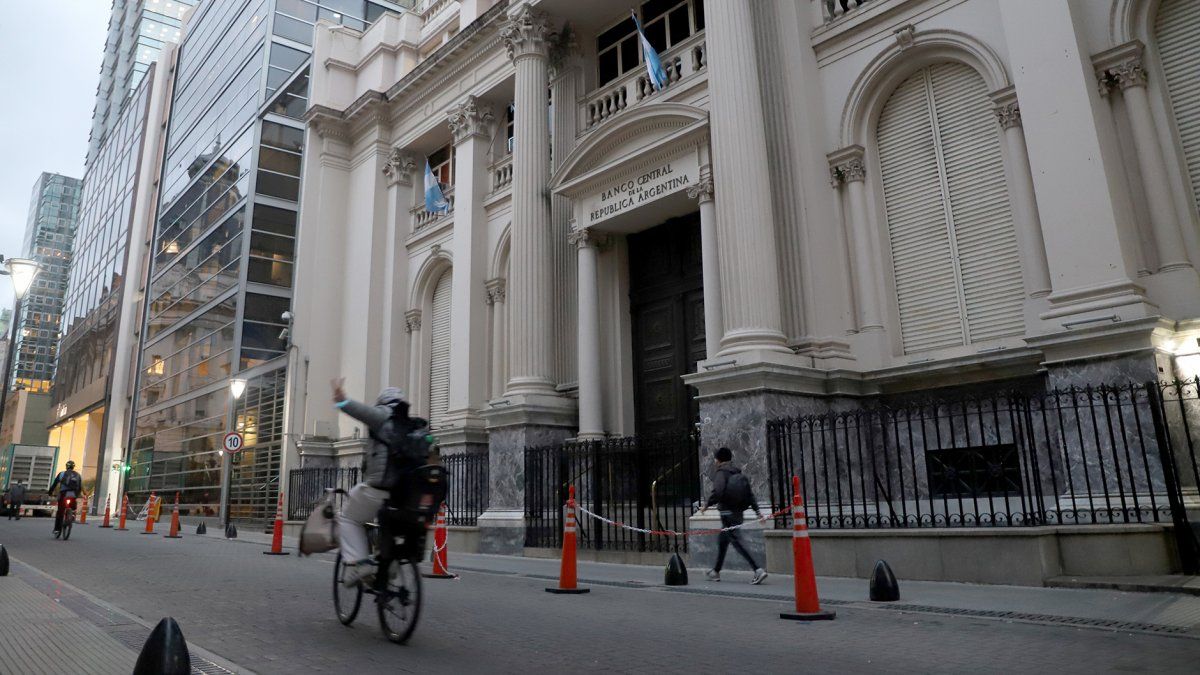The inflation data of 8.4% for April was higher than what everyone expected and, with a price escalation at these levels, it was expected that the Central Bank (BCRA) raise the rate of fixed term as announced this Sunday, after the meeting of the economic team on Saturday afternoon. As reported, it is a 600 basis point adjustmentwhich will place it in the 97%. And this Monday, the board of directors of the monetary regulator meets very early in the morning to approve this rate increase measure for Liquidity Letters (LELIQ) and repos, which is transferred to the Fixed deadlines.
As of this decision, the traditional 30-day fixed terms for up to $30 million will have an annual effective yield (TEA) of 154.3% and an effective monthly rate will rise from 7.5% to 8%while the one-day passes will have a TEA of 163% and the 28-day Leliq, one of 154.9%.
Is about the fourth rate hike carried out by the BCRA this year, although it did not do it monthly as in 2022, but the last three adjustments were arranged in the course of less than a month, with differences of one or two weeks from each other. The previous one was made just 14 days ago, when it brought the nominal annual yield of the fixed term to 91% through an adjustment of 1,000 points, the highest made by this management, with a TEA of 141% and a monthly yield of 7.5% This measure was taken in a context of high exchange rate volatility in parallel dollars and in the face of inflation of 7.7% in March.
It’s without doubt that the strong nominality of the economy is forcing the Central Bank to raise rates more and more regularly and with more force of what he was doing. The inflationary evolution demands an increasing effort from him to try to keep them positive with respect to inflation, but, even so, every time he raised it, he fell short or tied that index. In fact, the new 8% yield lags behind April’s 8.4% price index, though it beats March’s 7.7%.
Fixed term: the rate increase is effective
Thus, Martín Kalos, director of Elypsis, evaluates in dialogue with Ambit that “it is a relevant interest rate rise” and that, If the government manages to convince that inflation in May will remain around 8 points, it is attractive. But he assures that, from the consultancy, they expect that the data for May will be installed above that level.
“The issue is that It is not clear where inflation is going to settle. The evolution of the month comes at the same rate as that of April and it is a macroeconomic dynamic in which it is very difficult for the rate to catch up with inflation ”, he warns.
For the economist Federico Glustein, all this is a reflection of the fact that “we are in a moment of macroeconomics in which the rate hike It is not relevant” because, although a very high rate tends to affect consumption, due to an increase in the cost of credit, it is falling due to inflation. Thus, people are not going to consume less because of this, but because their purchasing power is at the limit.
It also points out that investors who have already decided to dollarize their portfolios are not going to stop doing so for a higher rate. However, he does believe that “it can influence the blue and financial dollars”, although he is concerned that it will take away the BCRA’s ability to react to a greater inflationary acceleration.
A decision as a message
However, as the director of MyR Consultores, Fabio Rodríguez, points out, this new rate hike “it had to be done as a message to the saver”, although he considers that macroeconomically “no longer solves anything”, but, on the contrary, fuels a nominal run and the explosiveness of monetary liabilities.
And it is that, as pointed out by the economist from the University of Avellaneda Pablo Ferrari, to try to avoid dollarization in the small saver, “it would be important that the increase in the official exchange rate and that of financial dollars be less than the TEM of the traditional fixed term”, although he warns that this does not seem such a likely scenario.
On the other hand, it points out that this adjustment of the yields of the fixed term will increase the financing cost of credits for production and commerce, a variable that can feed back inflation because it is difficult to reduce the profit margin, much less if it it is recharged to guard against higher replacement prices.
However, Ferrari points out that “this element is part of a set of measures” and considers that the focus should be on the result of this totality because, if only the increase in rates is analyzed, the diagnosis is complex.
Source: Ambito
I am a 24-year-old writer and journalist who has been working in the news industry for the past two years. I write primarily about market news, so if you’re looking for insights into what’s going on in the stock market or economic indicators, you’ve come to the right place. I also dabble in writing articles on lifestyle trends and pop culture news.




